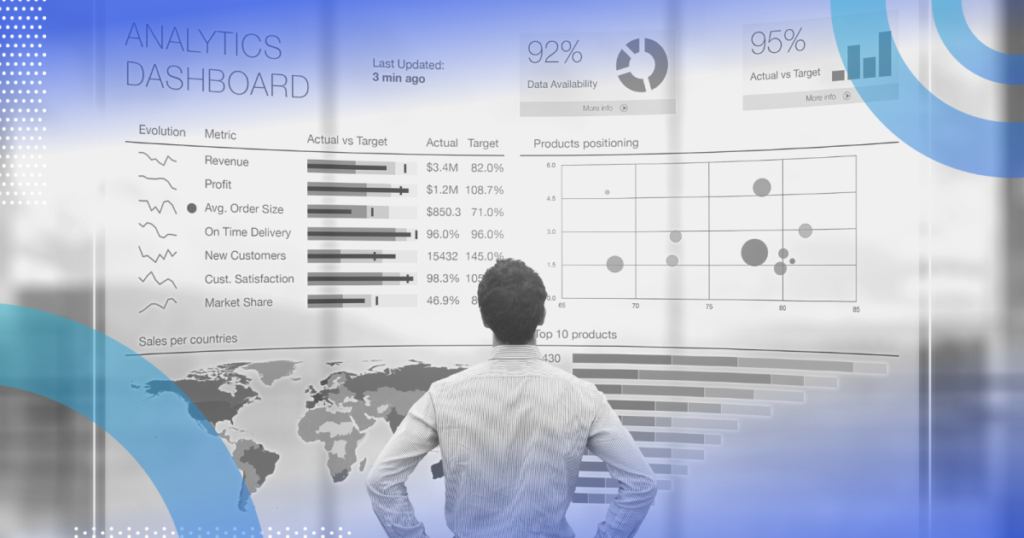In today’s fast-paced and data-driven business environment, the ability to gather, analyze, and utilize information effectively has become imperative for success. This is where business intelligence (BI) plays a pivotal role. Business intelligence encompasses a set of processes, architectures, and technologies that transform raw data into meaningful and actionable insights to support strategic decision-making.
Importance of Business Intelligence
Enhancing Decision Making
Business intelligence empowers organizations to make informed decisions based on comprehensive analysis rather than relying on gut feelings or intuition. By providing access to real-time data and predictive analytics, BI enables executives and managers to identify trends, anticipate market shifts, and mitigate risks effectively.
Improving Operational Efficiency
Another key benefit of business intelligence is its ability to streamline operations and improve efficiency across all departments. Through data visualization tools and performance dashboards, BI allows businesses to monitor key performance indicators (KPIs), identify bottlenecks, and optimize processes for maximum productivity.
Identifying Market Trends
In today’s highly competitive landscape, staying ahead of market trends is crucial for sustained growth. Business intelligence tools help organizations gather and analyze market data, customer feedback, and competitor insights to identify emerging trends and capitalize on new opportunities.
Components of Business Intelligence
Business intelligence comprises several interconnected components, each playing a vital role in the overall process:
Data Warehousing
Data warehousing involves the collection, storage, and management of large volumes of structured and unstructured data from various sources. A well-designed data warehouse serves as the foundation for BI by providing a centralized repository for data analysis and reporting.
Data Mining
Data mining involves the process of discovering patterns, correlations, and insights from large datasets using statistical techniques, machine learning algorithms, and artificial intelligence. By uncovering hidden relationships within the data, organizations can extract valuable insights to support decision-making.
Reporting and Analytics
Reporting and analytics tools enable users to visualize data in the form of charts, graphs, and interactive dashboards. These tools provide a user-friendly interface for exploring data, generating custom reports, and gaining deeper insights into business performance.
Business Intelligence Tools
Several software tools are available in the market to facilitate the implementation of business intelligence solutions:
Tableau
Tableau is a powerful data visualization tool that allows users to create interactive dashboards, reports, and visualizations from multiple data sources. Its intuitive interface and drag-and-drop functionality make it easy for users to explore data and gain actionable insights.
Power BI
Power BI is a business analytics tool developed by Microsoft that enables users to create interactive reports and dashboards using data from various sources. With its robust features and seamless integration with other Microsoft products, Power BI is widely used for data analysis and visualization.
QlikView
QlikView is a business intelligence and data visualization platform that provides users with self-service analytics capabilities. Its associative data model allows users to explore data dynamically and uncover insights through interactive visualizations and dashboards.
Implementation of Business Intelligence
Implementing a successful business intelligence strategy involves several key steps:
Data Collection and Integration
The first step in implementing BI is to gather data from disparate sources and integrate it into a centralized repository, such as a data warehouse. This process may involve extracting data from operational systems, cleansing and transforming it, and loading it into the warehouse for analysis.
Data Analysis and Reporting
Once the data is collected and integrated, the next step is to analyze it using various BI tools and techniques. This may include querying the data, performing statistical analysis, and creating reports and dashboards to visualize the findings.
Deployment and Maintenance
After the BI solution is developed, it needs to be deployed to end-users and stakeholders across the organization. Ongoing maintenance and support are also essential to ensure the system remains functional and up-to-date with changing business requirements.
Benefits of Business Intelligence
The adoption of business intelligence offers numerous benefits for organizations:
Increased Revenue
By leveraging data-driven insights, businesses can identify new revenue opportunities, optimize pricing strategies, and target high-value customers more effectively, leading to increased profitability.
Cost Reduction
Business intelligence helps organizations identify inefficiencies, eliminate redundant processes, and optimize resource allocation, resulting in significant cost savings across the board.
Competitive Advantage
Companies that embrace business intelligence gain a competitive edge by making faster, more informed decisions, anticipating market trends, and responding to customer needs with agility and precision.
Challenges in Implementing Business Intelligence
Despite its many benefits, implementing business intelligence can pose several challenges:
Data Quality and Integration
Ensuring the accuracy, completeness, and consistency of data across multiple sources can be a daunting task, requiring robust data governance policies and sophisticated integration capabilities.
Security Concerns
As organizations collect and analyze increasingly large volumes of sensitive data, ensuring data security and compliance with regulatory requirements becomes a top priority to protect against data breaches and cyber threats.
Resistance to Change
Introducing new BI tools and processes may encounter resistance from employees who are accustomed to traditional methods or reluctant to embrace technology-driven changes. Effective change management strategies are essential to overcoming this barrier.
Future Trends in Business Intelligence
Looking ahead, several trends are shaping the future of business intelligence:
Artificial Intelligence Integration
The integration of artificial intelligence and machine learning algorithms into BI tools enables advanced analytics capabilities, such as predictive modeling, natural language processing, and anomaly detection, to deliver more accurate and actionable insights.
Predictive Analytics
Predictive analytics empowers organizations to forecast future trends, anticipate customer behavior, and identify potential risks and opportunities, enabling proactive decision-making and strategic planning.
Real-time Data Processing
With the increasing demand for real-time insights, BI solutions are evolving to support real-time data processing and analysis, enabling organizations to react swiftly to changing market conditions and emerging threats.
Conclusion
In conclusion, business intelligence plays a critical role in helping organizations harness the power of data to drive strategic decision-making, improve operational efficiency, and gain a competitive edge in today’s dynamic business landscape. By leveraging advanced analytics, data visualization, and predictive modeling techniques, businesses can unlock valuable insights to fuel growth, innovation, and success.

